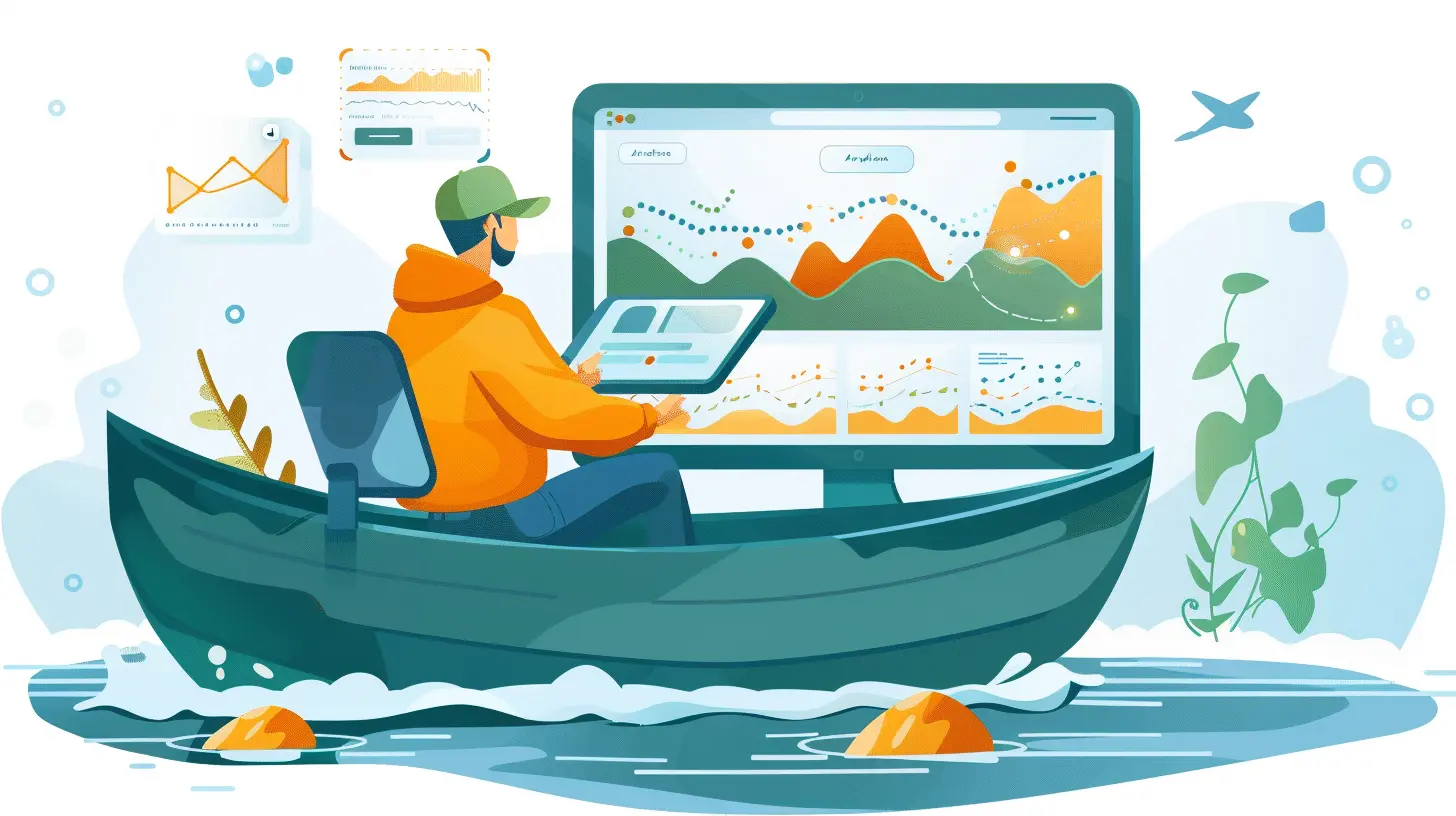The Role of Data Lakes in Modern Data Analytics
13 November 2025
In today’s fast-paced digital world, data is produced faster than ever before. From social media posts and online purchases to smart devices and enterprise systems, we’re swimming in data. The question isn’t whether data exists—it’s what we do with it. That’s where data lakes come in.
Data lakes have become a game-changer in modern data analytics. Think of them as massive digital reservoirs that can hold vast amounts of raw data in its native format. Unlike traditional databases or data warehouses, data lakes don’t ask you to organize everything upfront. You just dump the data in, and sort it out later when you need it.
Let’s dive into what makes data lakes so important today, how they work, and why businesses are betting on them to drive smarter, faster decisions.
What Is a Data Lake?
Let’s keep it simple. A data lake is a centralized storage system that lets you stash all kinds of data—structured, semi-structured, and unstructured—without needing to define a schema right away. You just throw the data in, whether it's from sensors, logs, social media, or spreadsheets.Now, imagine a real lake. You have streams (data sources) feeding into it—some clean, some murky. Everything mixes freely until it’s time to filter it out for use. That’s how a data lake functions. You collect first, process later.
Data Lakes vs. Data Warehouses: What’s the Difference?
If you're thinking, "Isn't that what a data warehouse does?"—not quite. Let’s break it down:| Feature | Data Lake | Data Warehouse |
|------------------|-------------------------------------------|--------------------------------------------|
| Data Format | Raw, unstructured, semi-structured, structured | Structured, highly organized |
| Storage Cost | Low (due to cheap object storage) | High (requires optimized storage solutions) |
| Schema | Schema-on-read | Schema-on-write |
| Purpose | Big data, machine learning, real-time analytics | Business reporting, operational analytics |
| Flexibility | High | Low |
So basically, if a data warehouse is a five-star restaurant with a fixed menu, a data lake is a giant buffet—you can mix and match whatever you want, whenever you want.
Why Data Lakes Matter in Modern Analytics
1. They Handle Massive Data Volumes
The digital universe is doubling in size every two years (yeah, it’s wild). Traditional systems just can’t keep up. Data lakes are designed to scale effortlessly, storing petabytes of data without breaking a sweat.2. They Embrace All Data Types
Whether it’s CSV files, images, videos, or real-time IoT sensor data, a data lake doesn’t discriminate. This flexibility is critical today when insights often rely on integrating different kinds of data.3. They’re Built for AI and Machine Learning
Machine learning models thrive on large and diverse datasets. Data lakes allow data scientists to access a goldmine of raw data to train better, more accurate models. It’s like giving a chef a fully stocked pantry vs. a limited set of ingredients.4. Real-Time Data Ingestion
Modern data lakes can ingest data in real time or near real time. That means businesses can act on insights immediately instead of waiting hours—or days—for reports. Imagine knowing your customer is about to churn and being able to fix it instantly.5. Cost-Effective Storage
Thanks to cloud solutions like Amazon S3, Azure Blob Storage, and Google Cloud Storage, storing huge amounts of data has become dirt cheap. Data lakes take full advantage of these to keep costs down.
Key Components of a Data Lake Architecture
Okay, now let’s unpack what makes a data lake tick.1. Data Ingestion Layer
This is where all your data streams in. You can use batch processes, real-time feeds, or even drag-and-drop uploads. Tools like Apache Kafka, AWS Kinesis, and Azure Event Hubs help with this.2. Storage Layer
Usually built on scalable cloud storage, this is where the bulk of your data lives. It's built for durability, redundancy, and low cost.3. Data Catalog or Metadata Layer
Without a catalog, your data lake turns into a data swamp—messy and hard to navigate. Metadata lets you know what data you have, where it came from, and how to use it. Think of it as your lake's GPS system.4. Processing Layer
This is where the magic happens. You clean, transform, and analyze data here. Tools like Apache Spark, Databricks, and AWS Glue shine in this layer.5. Consumption Layer
Finally, the end-users—analysts, data scientists, apps—get to consume data. Whether it’s visual dashboards or predictive models, this layer delivers insights to those who need them.Common Use Cases for Data Lakes
Data lakes power a wide range of use cases across industries. Let’s walk through some real-world examples.1. Fraud Detection
Banks and fintech companies use data lakes to process millions of transactions in real-time, spotting abnormalities and flagging suspicious activity almost instantly.2. Personalized Marketing
Retailers analyze customer behavior—from browsing history to purchase patterns—to send laser-targeted promotions and product recommendations.3. Healthcare Analytics
Hospitals can store and analyze unstructured data like medical images, lab results, and patient histories to improve diagnostics and treatment outcomes.4. IoT and Smart Devices
From smart thermostats to wearable fitness trackers, all that sensor data gets dumped into data lakes. This enables real-time monitoring, predictive maintenance, and more.5. Social Media Sentiment Analysis
Brands use natural language processing (NLP) on vast social data stored in lakes to gauge public opinion, identify trends, and respond accordingly.How Cloud Has Supercharged Data Lakes
Let’s be honest—managing your own data lake on-premises is no cakewalk. But thanks to the cloud, data lakes aren’t just powerful—they're manageable.Major Cloud-Based Data Lake Solutions:
- Amazon Web Services (AWS): Amazon S3 + AWS Lake Formation- Microsoft Azure: Azure Data Lake Storage + Azure Synapse
- Google Cloud: Google Cloud Storage + BigLake
These platforms make it easy to ingest, store, and analyze data with minimal overhead. Plus, they come with built-in security, access controls, and integration options.
Challenges of Data Lakes (And How to Beat Them)
Data lakes are awesome, but they’re not without their quirks.1. Data Swamps
Without proper governance and metadata tagging, data lakes can quickly become messy, unorganized, and unusable. Solution? Use a data catalog and build solid governance policies.2. Security and Compliance
When you’re storing sensitive data, you better lock it down. Encryption, role-based access, and compliance audits are a must.3. Performance Lag
Querying raw, unindexed data can be slow. Tools like Presto, Athena, or caching layers can help speed things up.4. Talent Gap
Building and maintaining a data lake ecosystem needs specialized skills. Investing in training or hiring experienced data engineers is crucial.The Future: Data Lakehouses
Now here’s a trend worth watching: the data lakehouse. It’s exactly what it sounds like—a combo of data lake flexibility and data warehouse structure. Platforms like Databricks and Snowflake are leading this evolution, offering the best of both worlds.You get the raw storage of a lake and the transactional reliability of a warehouse. Imagine a lake with crystal clear water, organized docks, and a snack bar on the side. That’s a lakehouse for you.
Final Thoughts
In the grand scheme of modern data strategy, data lakes are no longer optional—they’re essential. They enable businesses to collect and harness data without upfront structure, support AI-powered analytics, and scale infinitely in the cloud.Yes, they require governance, planning, and the right tools to avoid chaos. But when done right, data lakes can offer a competitive edge that’s hard to beat. Whether you’re a startup or a Fortune 500, diving into a data lake might just be the smartest move you make.
So, are you ready to take the plunge?
all images in this post were generated using AI tools
Category:
Data AnalyticsAuthor:

Gabriel Sullivan
Discussion
rate this article
1 comments
Priscilla Morrow
Data lakes? More like data oceans—vast and overwhelming! Dive in if you dare, but don't forget your life jacket. Analytics can be a real wave!
November 13, 2025 at 4:39 AM


